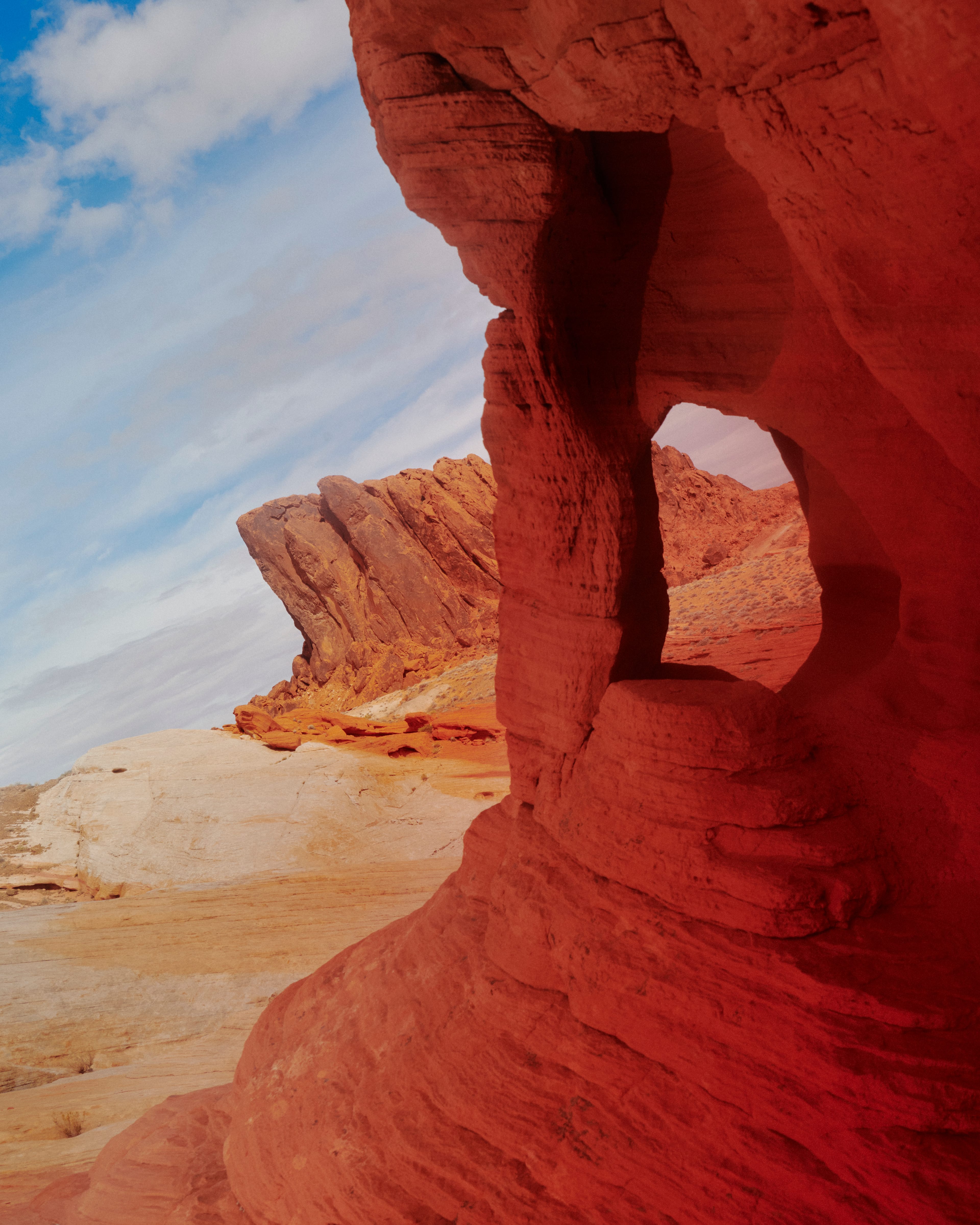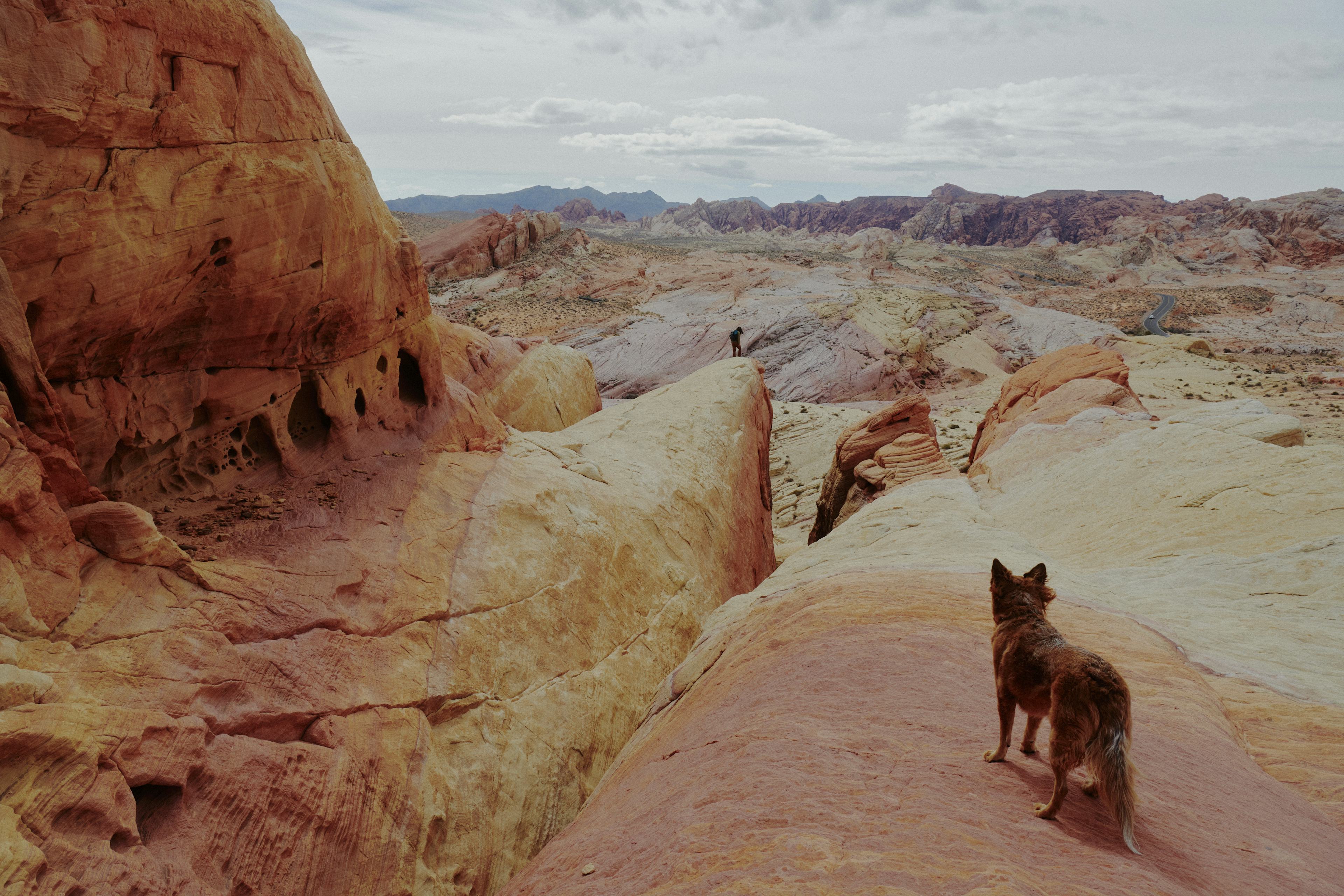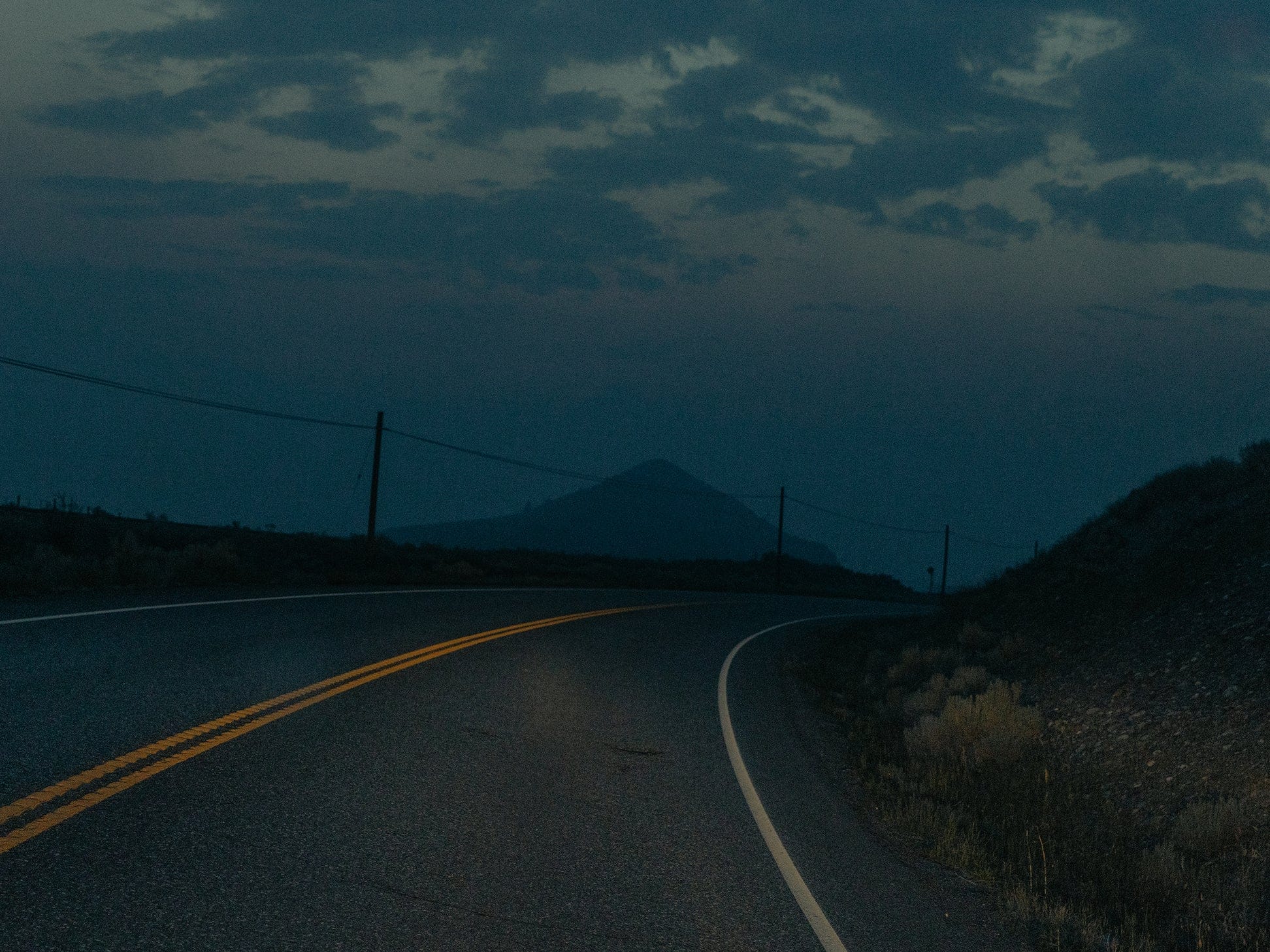The Desert Terrain is Mind Bending
And Nevada's Valley of Fire State Park is a dark horse for the best place to experience it.

Valley of Fire is a feast of abstract and intricate sandstone formations.
Some 45 minutes off the Las Vegas strip sits a parcel of state land with half the acreage of Saguaro National Park, one-sixth the visitation of Zion, and rock formations and petroglyphs as stirring as anything you’ll find at Arches or Mesa Verde. It’s Valley of Fire, the oldest state park in Nevada, and it’s as fine an example of the desert Southwest’s otherworldly mystique as any of the region’s more- hyped public lands.
Established in 1934, the park is a wonderland of red, orange and pink sandstone eroded over millions of years by wind and water. The stone that remains is a playground for hikers, climbers and travelers looking for a few slam-dunk Instagram shots. You want arches? Short hikes (no need for permits) lead to formations like gnarly Pagoda Arch and Elephant Rock, a towering stack with a “trunk” of delicately balanced stone. How about canyons? Valley of Fire has some stunners, along with dramatic painted hills and ancient petrified dunes. On the outcrop known as Fire Wave, the swooping bands of Aztec sandstone are hypnotic. The place is so alien looking, Hollywood made it a backdrop for sci-fi flicks like Total Recall and Star Trek.

The park’s two main roads, Valley of Fire Highway and Mouse’s Tank Road, are Nevada’s most scenic—and stiff competition for the best in the West. And though much of the park’s wonder comes from the elements at work on the landscape, Valley of Fire also protects rich cultural heritage. Petroglyphs, some carved upwards of 2,500 years ago, are a vestige of Ancestral Puebloan storytellers and, before them, the ancient people known as the Basket Makers.
As for the name: Come in the predawn, when only you, the coyotes and the bighorn sheep are stirring. Find a perch. Wait for the incendiary sunrise glow.






